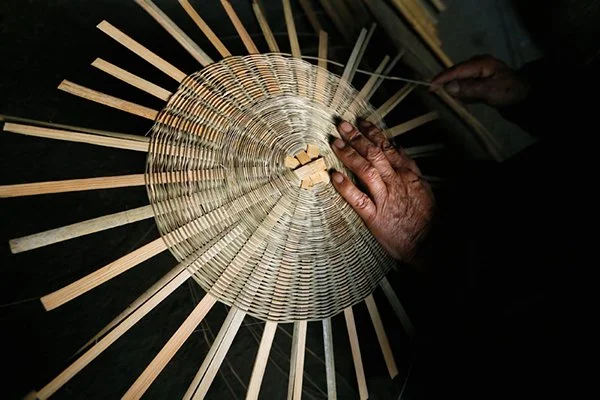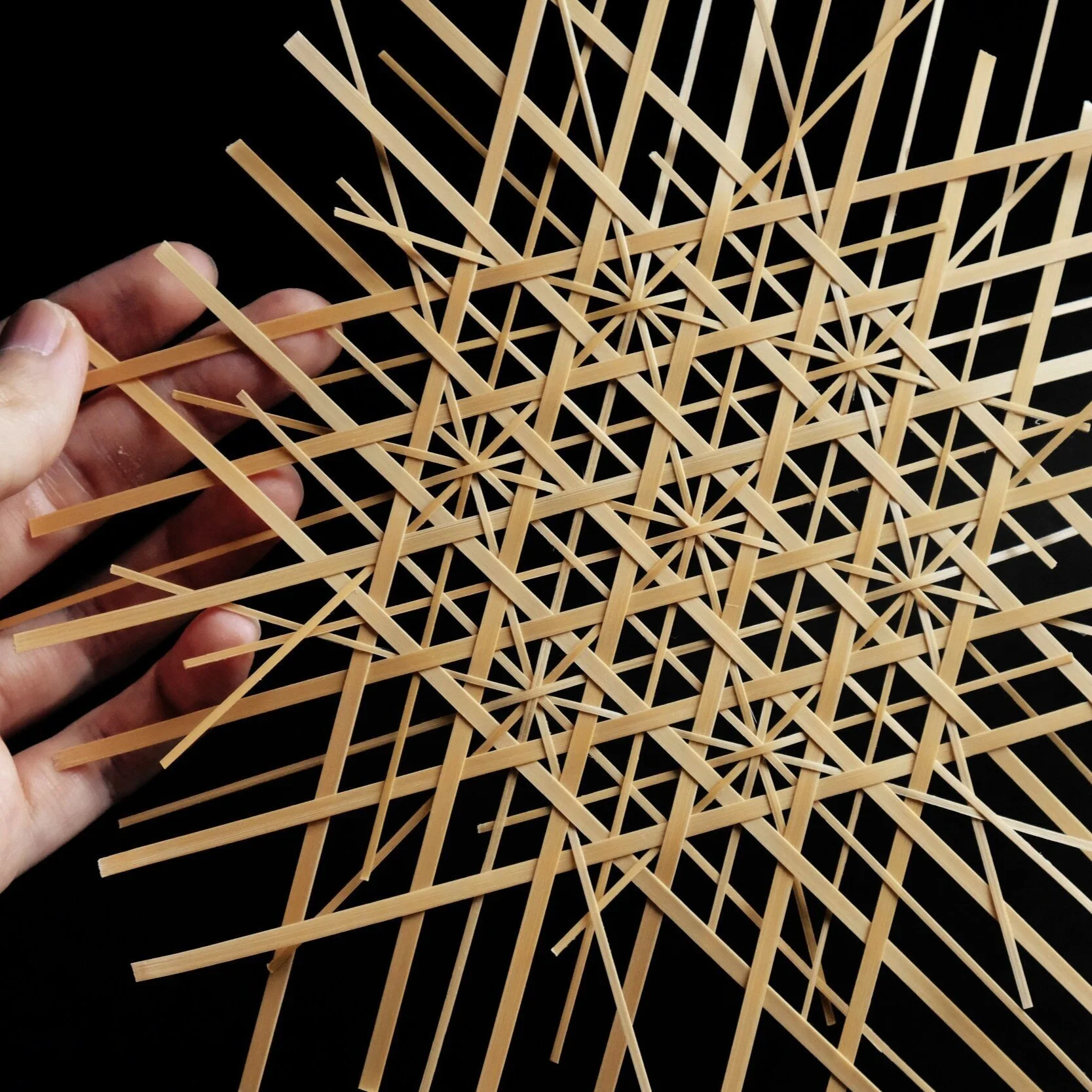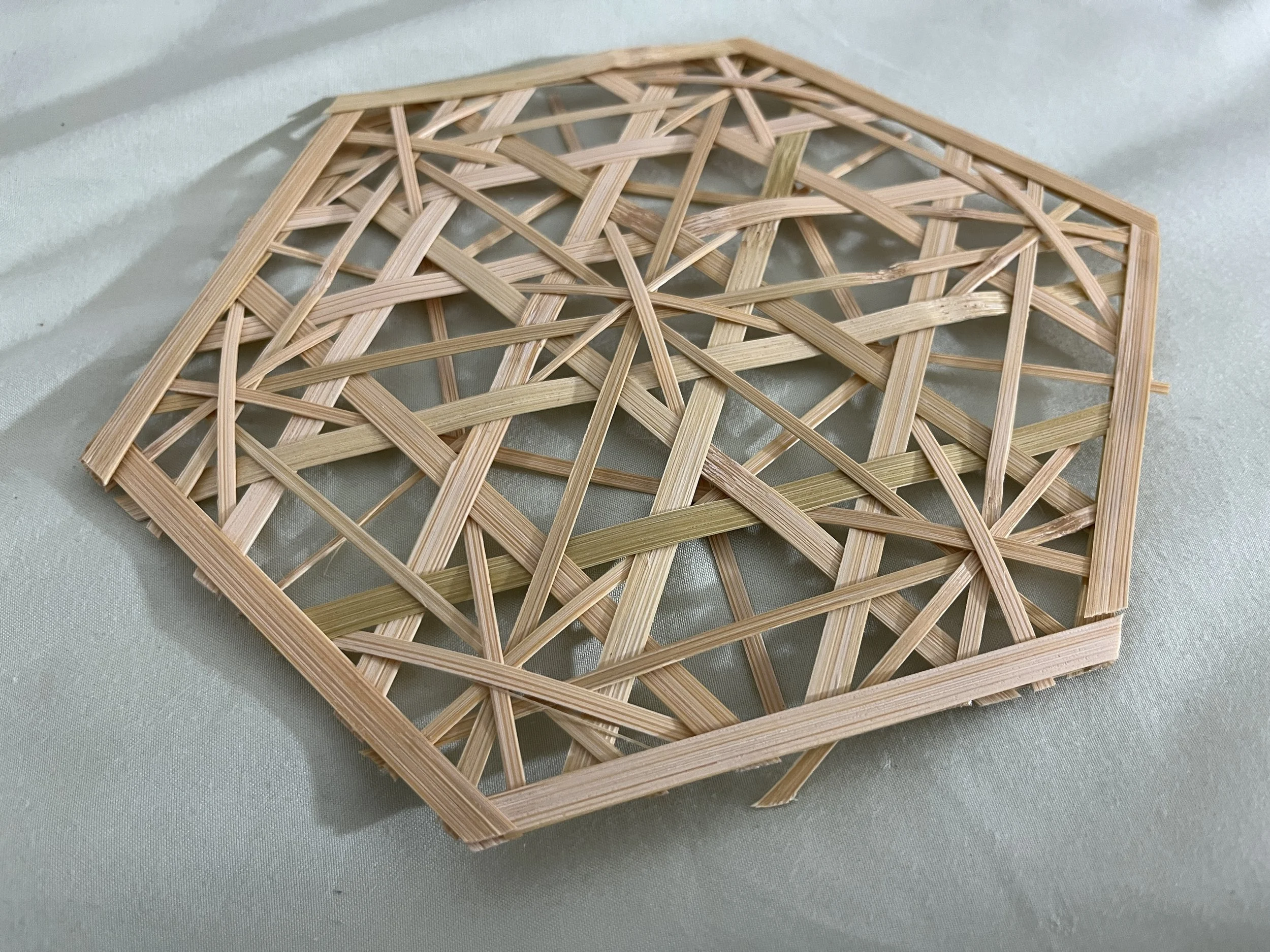Bamboo Weaving
Bamboo weaving is a craft deeply rooted in history—practiced for centuries across Asia, evolving from everyday utility to refined art.Before trying it myself, I spent time researching traditional patterns and techniques, from plain weaves to intricate hexagonal designs. I assumed it would be simple at first glance, but once I got hands-on experience with the bamboo strips, I quickly realized how much skill and subtlety the process involved. This blog is a mix of that research and my first weaving attempt—what I learned, what challenged me, and why I want to return to it with fresh eyes.
History of Bamboo Weaving
Bamboo has been used by humans for thousands of years. Archeological evidence of woven bamboo items has been found in regions across Asia, especially China, Japan, and Southeast Asia. Bamboo weaving in China dates back to the Neolithic Hemudu Culture (~7000 years ago), with archaeological evidence from Zhejiang Province revealing early utilitarian artifacts. Over millennia, it evolved from agricultural tools in the Yin Shang and Qin-Han dynasties to refined decorative crafts during the Tang and Song periods, reaching artistic maturity in the Ming-Qing eras when integrated with lacquerware and imperial regalia. Regional styles emerged, such as Fujian’s lace-like basketry and Anhui’s sturdy furniture, reflecting local materials and cultural aesthetics.
Bamboo weaving embodies harmony between humans and nature, leveraging the plant’s sustainability, antibacterial properties, and resilience. As a UNESCO-recognized intangible heritage, it integrates functional and artistic values from daily utensils to ceremonial objects. Silk Road exchanges further disseminated techniques across Asia, influencing Japanese and Korean traditions
Bamboo Weaving Techniques
Material Preparation
Bamboo selection by species, age, and color
Here is an detailed bamboo splitting and making strips video for further exploration: JUNKAN WORKS
Plain Weave (Tabby Weave)
Simple over-under pattern; strong and flat for mats and baskets
Strips are split, soaked (for flexibility), and dried to prevent warping
Twilled Weave
Diagonal or chevron lines; flexible with subtle texture
Hexagonal (Star) Weave
Honeycomb pattern; open and decorative
Outer layers scraped to expose uniform fibers
Weaving Methods
Plaiting / Interlacing
Crisscross or diamond patterns; adds texture and strength
Coiling / Spiral Weaving
Circular weave for bowls and round baskets
My First Bamboo Weaving Experience
When I first looked up bamboo weaving techniques, I assumed it would be pretty straightforward. The images and tutorials made it look simple—similar to other weaving methods I’ve tried before, just with different materials. So I decided to challenge myself and give it a try.
The raw bamboo strips I got were about two feet long. I had to cut them down into smaller pieces to fit the size of the pattern I wanted to make. Since this was my first time, I didn’t want to invest too much into extra materials. I settled on creating a small woven patch, like a pattern sample or a fan without the handle.
The overall process wasn’t too difficult, but keeping the strips in place and making everything align properly was definitely the tricky part. My final result isn’t perfect—the hexagonal shapes are a little deformed, and I think that’s partly because I didn’t use any tape or tools to help stabilize the strips as I worked. I didn’t have any artist’s tape on hand, and I was hesitant to use clear tape since it could easily damage the delicate bamboo.
One fun trick I learned along the way was how easy it is to split bamboo strips in half vertically. With a quick soak in water to soften the fibers, you can cleanly divide one large strip into thinner pieces. Bamboo’s natural vertical grain makes this surprisingly smooth to do—unlike many other materials that would fray or snap.
Finishing the weave was another unexpected challenge. Once the pattern is complete, you’re left with raw, sharp edges that need to be trimmed. These ends can feel rough and even a bit dangerous. Many tutorials I found suggest wrapping fabric around the edges to soften them, especially for making handheld fans. But I didn’t love the look—fabric tends to stretch and wrinkle, making the final product look a bit messy. Others use thick wooden frames screwed together, which feel bulky and overbuilt for such a delicate piece.
There has to be a better, cleaner way to finish off these weavings—something that complements the lightness and precision of the bamboo itself. Maybe next time I’ll revisit this project with my designer hat on and try to create a refined edge solution that’s both functional and elegant.
Until then, I’m happy with the learning experience—and the slightly wonky little patch I ended up with.
























